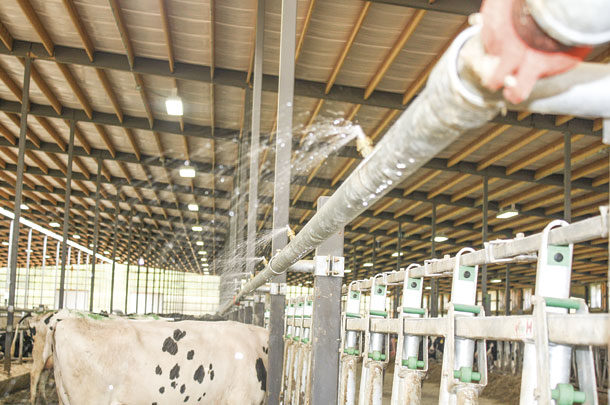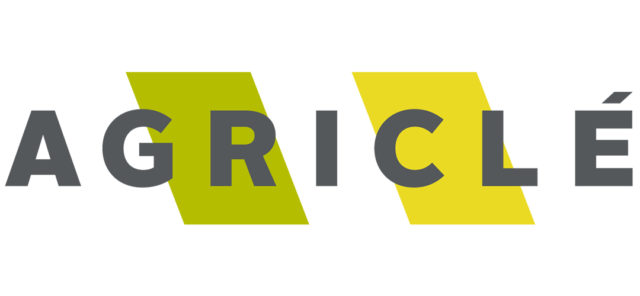The dairy industry is becoming more aware of the costs of heat stress and the impact those costs can have. The use of cooling systems for cows is becoming more prevalent every year to fight heat stress and prevent losses associated with it. There are different types of cooling systems available, with high-pressure fogging and low-pressure soaking being two of the most commonly used.
Choosing the right cooling system for a dairy farm will depend on various factors such as the climate in the region, the size of the farm and the cost of installation and maintenance. The high-pressure fogging system is ideal for use in hot and dry climates, while the low-pressure soaking system is better suited to humid climates. Both systems have their advantages and disadvantages, and farmers should carefully consider their options before making a decision.
In this article, we compare the two systems, along with their advantages and their disadvantages.
High-pressure fogging is a cooling system that uses high-pressure water mist to lower the temperature on the dairy farm. The system is designed to create a fine mist that is sprayed into the air, which then evaporates, cooling the surrounding air. This is referred to as indirect cooling, as we are cooling the air, not the cows. The high-pressure system is ideal for use in hot and dry climates, as it helps to maintain the optimum temperature for dairy cows.
On the other hand, low-pressure soaking involves wetting the cow's skin with water using low-pressure nozzles. This method is designed to create a layer of water on the cow's skin that evaporates, thus providing a cooling effect. This is referred to as direct cooling, as we are using the water to cool the cow itself. Low-pressure soaking is ideal for use in humid climates where the air is already saturated with water, making it difficult for the high-pressure fogging system to work efficiently.
Both systems have their advantages and disadvantages, and choosing the right one will depend on various factors such as the climate in the region, the size of the farm and the cost of installation and maintenance.
One of the benefits of the high-pressure fogging system is that it can provide a significant reduction in temperature across the barn; in some cases this can be up to 15ºC (27°F) or greater when compared to the outside temperature. This means the system can keep the cows comfortable even in the hottest of temperatures, which is important for their health and productivity.
However, one of the disadvantages of the high-pressure fogging system is that it can be expensive to install and maintain. The system requires high-pressure pumps and specialized nozzles that can be costly to purchase and maintain. Additionally, the system requires a constant supply of water, which can also add to the cost. High-pressure fogging systems work by adding moisture to the air stream, increasing the humidity levels. If a barn does not have a proper ventilation system with the appropriate air exchange rates, that increase in humidity can become detrimental to animal health as well as the building and equipment inside of it.
Low-pressure soaking, on the other hand, is more affordable than high-pressure fogging. The system uses low-pressure nozzles that are less expensive than the high-pressure nozzles used in the high-pressure fogging system. Additionally, the low-pressure system does not require the same amount of constant supply of water, which can help to reduce water usage and costs. A soaking system is usually set up so that only one zone or pen of the barn is active at once, so the peak water demand is kept relatively low.
However, the low-pressure soaking system may not be as effective as the high-pressure fogging system in hot and dry climates. The system works best in humid climates where the air is already saturated with water, making it easier for the water on the cow's skin to evaporate and provide a cooling effect. Low-pressure soaking systems also add a lot of water into the manure system of a barn. The cost of handling that extra water and ensuring you have the capacity to process it are two important factors to consider.
In terms of installation, both systems require a significant amount of planning and investment. A high-pressure fogging system will be more capital-intensive to set up, as the high-pressure pumps and supply lines are costly. One of the more costly parts of a low-pressure soaking system is getting adequate water flow to the various parts of the barn where you need it. Both high-pressure fogging and low-pressure soaking will require some form of environmental control system to operate them.
Whichever system is chosen, it is important to remember that the health and comfort of the cows should be the top priority. Providing a cool and comfortable environment for the cows will not only improve the health of your animals; it is an investment in the future of your dairy operation.










